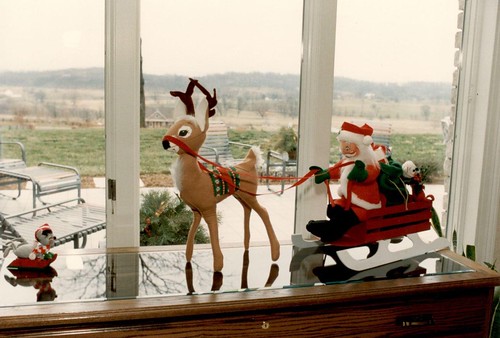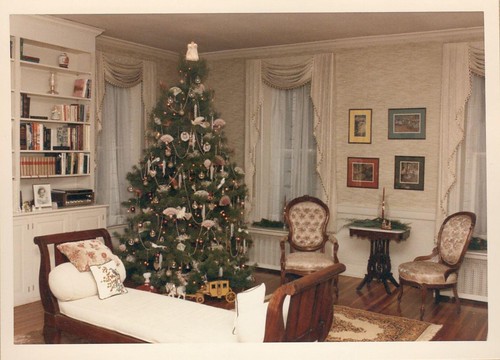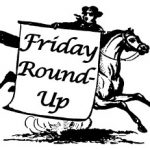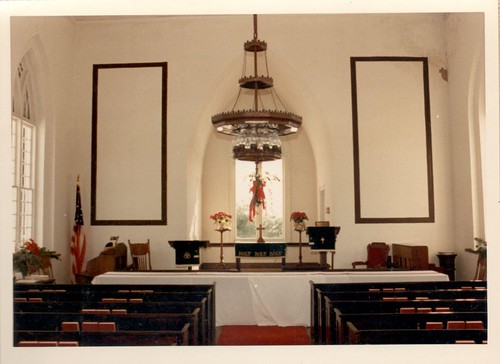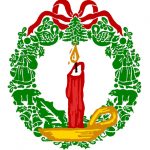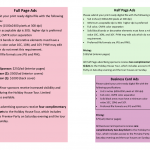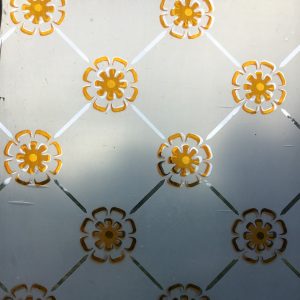 We had a great question last week on whether there were any efforts to date window glass. As you might know, there were two usual ways to produce window glass by hand which were used until the early 1900s – crown glass and cylinder glass. In general, crown glass was used in older construction, with cylinder glass becoming more prominent during the Victorian era as larger windows with fewer individual panes became desirable. Crown glass is usually thinner, and ripples often have a circular pattern. Cylinder glass ripples and bubbles are usually less pronounced and parallel, like the example photo taken here at the Hexagon House (circa 1870).
We had a great question last week on whether there were any efforts to date window glass. As you might know, there were two usual ways to produce window glass by hand which were used until the early 1900s – crown glass and cylinder glass. In general, crown glass was used in older construction, with cylinder glass becoming more prominent during the Victorian era as larger windows with fewer individual panes became desirable. Crown glass is usually thinner, and ripples often have a circular pattern. Cylinder glass ripples and bubbles are usually less pronounced and parallel, like the example photo taken here at the Hexagon House (circa 1870).
Here are a few articles we found on the history of window glass, some guidelines for dating glass primarily based on thickness, and case studies applying and interpreting the dating guidelines to specific sites. These articles are on the technical side, but interesting reading nonetheless.
1. “The Value of Historic Window Glass” by David Dungworth
This article covers the period from about 1500-1960 in English glass manufacturing. While some of the information is likely to not apply here in America, the article contains many great illustrations of the way this glass looks, how it was made, and what color and surface texture you might see in the glass. The more technical aspects start in the second half of the article by breaking the glass down by chemical analysis into distinct periods of English glass manufacturing.
2. “A Comparison and Review of Window Glass Analysis Approaches in Historical Archaeology” by Jonathan Weiland
This brief is perhaps even more technically-heavy than the first, but it is geared toward American glass dating, primarily by measuring the thickness of glass and with an emphasis on archeology. Because of the archeology approach, there is also discussion on distinguishing window glass from mirrors, flat bottles, and other glass sources. If you like looking through charts and weighing different methods of analyzing data collected from a dig site or trash pit, this could be a good starting point.
3. “Window Glass Dating: When Was McConnell’s Homestead Built?” by Grant L. Day
Putting article #2 in action is this paper on window glass dating conducted at the site of two structures near Lexington, Kentucky during excavations. The conclusions from the archeology here are combined with other historic knowledge on ownership and historic events to help extrapolate some theories about the glass found at the site.
4. Windows Through Time
Although not precisely scientific and the lack of scale between images may make comparisons difficult, the exhibit by the Historic Preservation Education Foundation catalogs the appearance of the entire window by period and style and not just the glass itself. If you have an intact window, this might prove useful to help date it. Don’t miss the muntin profiles, which are fairly reliable ways to date the wood in windows based on the shape of the wood bars which hold smaller pieces of glass together in the larger sash.
5. “Making A Home: Window Glass and the Transition from Slavery to Freedom” by Terry Brock
In addition to documenting the changes to slave quarters which continued to be used as African-American housing after the Civil War in St. Mary’s City in Maryland, this blog post is more easily accessible than some of the other articles here. For the visual learners who can’t stand wading through charts of thickness and age, the post has a very clear comparative thickness image of glass dated circa 1830, 1860, and 1900.
Above all, the lesson seems to be that dating glass is not yet a precise science, due in part to the variations of the skill of craftsmen and the tools and base materials impacting the thickness of the glass. Rough estimates based on visual clues and measurements, combined with other sources of corroboration, seem to be the best guides. Chemical analysis on historic glass does not yet seem to have been utilized in American glass dating, but perhaps we can look forward to it in the coming years.
